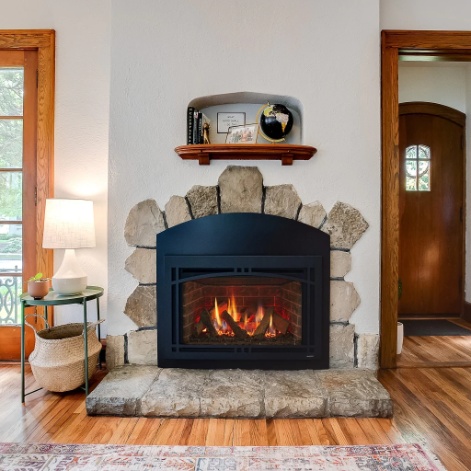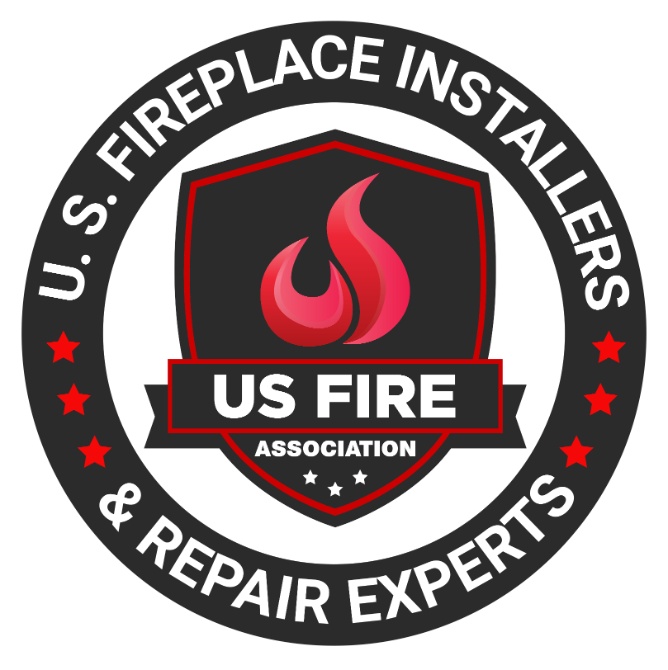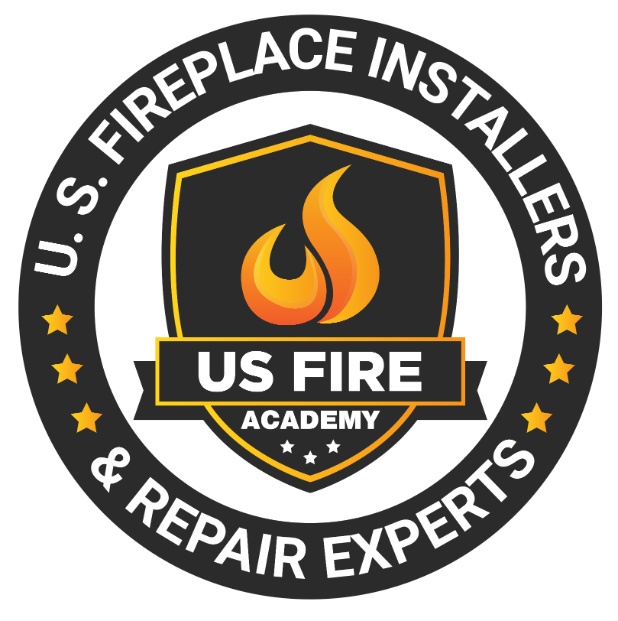Table of Contents
- 1 What Is Fireplace Mist?
- 2 How Does Fireplace Mist Work?
- 3 What Are The Benefits Of Using Fireplace Mist?
- 4 What Are The Different Types Of Fireplace Mist?
- 5 What Are The Safety Precautions When Using Fireplace Mist?
- 6 How To Choose The Right Fireplace Mist For Your Home?
- 7 How To Maintain and Clean Your Fireplace Mist?
- 8 Frequently Asked Questions
Fireplace mist is a popular accessory that can enhance the ambiance of your home by creating a realistic fireplace experience.
We will explore the different types of fireplace mist available, including traditional, electric, and gel options.
Discuss safety precautions to keep in mind when using fireplace mist and provide tips on how to choose the right one for your home.
Learn more about maintaining and cleaning your fireplace mist for optimal performance.
What Is Fireplace Mist?
Fireplace mist is a specialized system that creates a realistic mist effect to mimic the appearance of a traditional fireplace, enhancing the ambiance and atmosphere of any space.
This innovative feature adds a touch of warmth and coziness to a room, making it feel inviting and comfortable.
The gentle mist produced by the fireplace mist system not only replicates the visual aspect of a crackling fire but also creates a soothing sound that further enhances the immersive experience.
By incorporating this unique element, the room is transformed into a tranquil retreat, perfect for relaxation and unwinding after a long day.
The interplay of light and mist creates a mesmerizing display that captivates the senses, making it a focal point in any setting.
How Does Fireplace Mist Work?
Fireplace mist operates by generating a fine mist that interacts with LED lights to produce an illusion of flames, which can be adjusted to suit different design options and preferences.
This innovative technology uses a water-based mist that is released into the air through specialized nozzles.
The mist is illuminated by the LED lights in various colors and intensities, mimicking the flickering effect of real flames.
What makes this system truly versatile is the ability to customize the intensity, color, and movement of the mist, allowing homeowners to create a unique ambiance that complements their décor style.
From traditional to contemporary designs, the fireplace mist technique offers endless possibilities for creating a cozy and inviting atmosphere in any living space.
What Are The Benefits Of Using Fireplace Mist?
Using fireplace mist offers various benefits, including creating a realistic fireplace experience that adds humidity to the air, thereby improving indoor air quality and regulating humidity levels within a room.
This innovative solution not only replicates the mesmerizing ambiance of a traditional fireplace but also eliminates the need for the maintenance and potential dangers associated with a real fire.
By releasing fine mist particles into the air, fireplace mist helps to combat dryness, which can often lead to discomfort such as irritated skin and respiratory issues.
Maintaining optimal humidity levels in your indoor space contributes to a healthier environment and can even enhance the longevity of wooden furniture or other items sensitive to dry conditions.
Creates a Realistic Fireplace Experience
One of the primary benefits of fireplace mist is its ability to create a truly realistic fireplace experience.
Additionally, it enhances the ambiance and aesthetics of any room.
This effect is achieved by serving as a captivating focal point.
The soft, flickering glow of the fireplace mist gently illuminates the surrounding space.
It also casts dancing shadows on the walls.
Consequently, it gives the room a cozy, intimate feel.
The gentle sound of crackling embers adds to the overall sensory experience.
This sound creates a comforting backdrop for relaxation.
Moreover, it is perfect for unwinding after a long day.
With its ability to mimic the warmth and charm of a traditional fireplace, the fireplace mist effortlessly transforms the atmosphere.
Therefore, it becomes the perfect gathering spot for intimate conversations.
Additionally, it is ideal for cozy nights in with loved ones.
Adds Humidity to Dry Air
Another significant benefit of using fireplace mist is its capability to add moisture to dry air, which not only helps to improve humidity levels but also contributes to a comfortable and cozy environment akin to traditional heating sources.
This added moisture can be particularly beneficial in dry environments where the air tends to become overly dry, leading to discomfort such as dry skin, irritated mucous membranes, and increased susceptibility to respiratory issues.
By infusing the air with moisture, fireplace mist can alleviate these symptoms and create a more pleasant atmosphere for occupants.
The enhanced humidity levels can also help prevent furniture and wooden structures from drying out and becoming damaged, prolonging their lifespan and maintaining the overall comfort of the space.
Helps with Allergies and Respiratory Issues
Fireplace mist can be beneficial for individuals with allergies or respiratory problems.
It helps maintain indoor air quality by adding moisture.
Additionally, it reduces irritants that can trigger sensitivities.
The introduction of moisture through fireplace mist can also alleviate symptoms such as dryness and irritation in the respiratory passages.
This makes it easier to breathe comfortably.
By regulating the humidity levels in the air, the mist from the fireplace acts as a natural humidifier.
It prevents the air from becoming too dry.
This condition is often a common trigger for respiratory issues and allergies.
This creates a more pleasant and supportive environment for those who are sensitive to airborne particles.
It also benefits individuals who have conditions exacerbated by dry indoor air.
What Are The Different Types Of Fireplace Mist?
There are various types of fireplace mist systems available, including traditional wood-burning options, gas-powered units, and modern electric variants, each offering distinctive features such as vented or vent-free designs.
Wood-burning fireplaces provide a classic ambiance with the crackling sounds of burning logs and the aroma of wood smoke.
On the other hand, gas fireplaces offer convenience and easy operation, often with remote control options for adjusting the flame settings.
Electric fireplaces, powered by electricity, are efficient and versatile, allowing you to enjoy the warmth and visual appeal without the need for a chimney or gas line.
When it comes to vented designs, they require a chimney or vent to channel out the combustion byproducts.
In contrast, vent-free models use a technology that ensures clean combustion, making them suitable for installations where venting may be difficult or impossible.
Traditional Fireplace Mist
Traditional fireplace mist systems typically operate using wood-burning mechanisms, with a classic hearth and chimney setup that adds a rustic charm to any space.
These models exude a cozy ambiance, making them a focal point in living rooms or cabins.
The crackling sound of burning wood and the sight of glowing embers evoke a sense of nostalgia and warmth.
The dim lighting cast by the flickering flames creates a soothing atmosphere, perfect for relaxing or gathering with loved ones.
The smell of burning wood further enhances the sensory experience, transporting individuals to a simpler time.
Traditional fireplace mist models capture the essence of traditional home comfort and aesthetic appeal.
Electric Fireplace Mist
Electric fireplace mist systems are known for their energy efficiency and modern design elements, offering a convenient and eco-friendly heating alternative for contemporary spaces.
These innovative heating solutions provide a realistic flame effect without the need for gas or wood, making them a low-maintenance option for those seeking hassle-free ambiance.
With adjustable settings and remote controls, they offer customizable heating options to suit individual preferences.
The sleek designs of electric fireplace mist systems seamlessly blend with modern decor, adding a touch of elegance and style to any room.
Their environmentally conscious features make them a popular choice for eco-conscious consumers looking to reduce their carbon footprint while staying warm and cozy.
Gel Fireplace Mist
Gel fireplace mist units are celebrated for their ability to create a cozy ambiance and elevate the aesthetics of a room, providing a unique heating source that blends functionality with style.
These innovative systems feature a clean-burning, eco-friendly fuel that produces a mesmerizing flame effect, adding both warmth and visual appeal to any space.
With no need for a chimney or venting, gel fireplace mist systems offer versatility in placement, making them ideal for apartments, condos, or homes without traditional fireplace setups.
The gel fuel used in these fireplaces is convenient to store and handle, allowing for hassle-free and mess-free operation.
The customizable designs of these units allow homeowners to tailor the look to match their interior decor, providing a seamless integration of beauty and practicality.
What Are The Safety Precautions When Using Fireplace Mist?
When utilizing fireplace mist systems, it is crucial to adhere to safety precautions such as installing child safety locks, using fire screens, and ensuring proper ventilation to mitigate any potential risks.
Child safety features play a critical role in preventing accidents involving young children, as they prevent access to the mist system’s controls.
Fire screens act as a protective barrier, shielding occupants from direct contact with the flames and hot surfaces.
Adequate ventilation is necessary to disperse any potentially harmful gases produced during mist operation, ensuring a safe and healthy indoor environment.
By following these safety measures, users can enjoy the ambiance of a mist system without compromising on safety.
Keep Away from Children and Pets
One of the primary safety precautions when using fireplace mist systems is to keep them out of reach of children and pets, while also ensuring the presence of a fire extinguisher for emergency situations.
Children and pets are naturally curious and may not be fully aware of the potential dangers associated with fireplaces or mist units.
By taking proactive steps to secure these devices and having a fire extinguisher within easy reach, homeowners can significantly reduce the risk of accidents and protect their loved ones.
In the event of an unforeseen fire incident, having a fire extinguisher nearby can make all the difference in swiftly containing and extinguishing the flames before they escalate.
Safeguarding your home and family includes being prepared for any emergency scenario that may arise.
Use Properly and Follow Instructions
To maintain safety while using fireplace mist, it is essential to operate the system correctly, follow manufacturer instructions diligently, and schedule regular professional maintenance and cleaning services.
Proper operation of fireplace mist units ensures efficient performance and reduces the risk of malfunctions or accidents.
Adhering to manufacturer guidelines not only enhances the longevity of the system but also safeguards against potential hazards.
It is recommended to seek the expertise of professionals for periodic maintenance checks and thorough cleaning to uphold optimal functionality and safety standards.
Neglecting routine upkeep may lead to decreased effectiveness and compromise the safety of your home environment.
Prioritizing these maintenance tasks will not only protect your investment but also provide peace of mind during fireplace usage.
How To Choose The Right Fireplace Mist For Your Home?
Selecting the ideal fireplace mist system for your home involves considering design options.
Additionally, you should evaluate heating sources.
Furthermore, zoning requirements are crucial to ensure the chosen unit aligns with your aesthetic preferences and heating needs.
It is imperative for individuals to thoroughly evaluate the design choices available.
Take into account aspects such as modern sleek designs.
Consider rustic charm or traditional elegance that will harmonize with their existing decor.
Understanding the heating mechanisms associated with different fireplace mist models is key.
This knowledge helps in determining which unit can efficiently heat your space.
Moreover, it ensures the system maintains energy efficiency.
Zoning considerations play a significant role in ensuring that the fireplace mist system is seamlessly integrated into your home.
This integration provides optimal functionality in desired areas.
Consider the Type of Fireplace
Begin by evaluating the type of fireplace that fits your space, whether it’s a fireplace insert, freestanding unit, or built-in installation, to determine the most compatible option for your home.
Fireplace inserts are ideal for those looking to retrofit an existing fireplace with a more efficient and cleaner-burning option.
They are versatile and can be easily installed into an existing masonry or prefabricated fireplace.
On the other hand, freestanding models offer flexibility as they can be placed anywhere in the room, making them a great choice for smaller living spaces or rooms without existing fireplaces.
For a seamless and custom look, built-in installations are the way to go, offering a tailored solution that blends harmoniously with the room’s design.
Check for Compatibility
Ensure the fireplace mist system’s compatibility by assessing factors such as heat distribution, room dimensions, and square footage to guarantee optimal performance and an efficient heating solution for your living space.
When evaluating the compatibility of fireplace mist units with your room, it’s essential to consider the layout’s design and how the heat will circulate.
A well-matched unit will efficiently distribute heat, ensuring that all areas are warmed evenly.
Take into account the square footage of the room to determine the heating capacity needed for optimal comfort.
By carefully assessing these factors, you can tailor your fireplace mist system to suit your specific requirements and create a cozy atmosphere in your home.
Read Reviews and Compare Brands
Before making a final decision, read reviews, compare brands, and consider factors like warranty coverage, resale value, and potential impact on property value to make an informed investment in a fireplace mist system.
When choosing a fireplace mist unit, it’s essential to delve into the details meticulously.
By researching thoroughly, you can gain insights into the performance, reliability, and overall satisfaction from other consumers.
Comparing different brands allows you to understand the unique features and benefits offered by each manufacturer.
Evaluating factors like warranty coverage ensures that you are protected in case of any unforeseen issues.
Considering the resale value and the potential influence on your property’s worth can help you determine the long-term value and benefits of your investment.
How To Maintain and Clean Your Fireplace Mist?
Proper maintenance of your fireplace mist system involves regular cleaning of the water tank, timely filter replacements, and appropriate storage when not in use to ensure the longevity and efficient functioning of the unit.
Regularly cleaning the water tank is crucial to prevent build-up and ensure that the mist system operates effectively.
Timely filter replacements are essential as clogged filters can hinder the system’s performance.
Proper storage practices, such as keeping the unit in a dry and protected area when not in use, help maintain its condition and prevent damage.
By following these maintenance practices diligently, you can enjoy a functional and durable fireplace mist system for years to come.
Regularly Clean the Water Tank
Regularly cleaning the water tank of your fireplace mist system is crucial to prevent blockages and maintain efficient mist generation, ensuring the system operates smoothly without any troubleshooting issues.
Over time, mineral deposits and debris can build up in the water tank, leading to clogs and decreased mist production.
To avoid these issues, schedule periodic professional servicing for a thorough deep cleaning of the tank.
If you notice a decrease in mist output or strange noises from the system, troubleshoot by checking the water level.
Ensure proper ventilation around the unit.
Check the misting nozzles for any blockages and clear them if necessary.
Replace Filters as Needed
Timely replacement of filters in your fireplace mist system is essential for sustaining optimal performance, and this simple DIY task ensures efficient mist production and maintains the system’s longevity.
Regularly changing the filters on schedule helps to prevent clogs, blockages, and ensure that the mist unit functions smoothly.
Neglecting filter maintenance can lead to decreased mist quality, reduced airflow, and potential damage to the system over time.
By proactively replacing filters, you not only enhance the overall effectiveness of your fireplace mist system but also contribute to energy efficiency and cost savings in the long run.
Taking care of these routine maintenance tasks can go a long way in preserving the functionality and durability of your mist unit.
Store Properly When Not in Use
Proper storage of your fireplace mist system when not in use protects the unit from damage.
Moreover, it preserves its warranty coverage.
This practice also ensures that insurance policies remain valid for added peace of mind.
When your fireplace mist system is not in use, taking the time to store it correctly can significantly impact its longevity.
Additionally, it affects the overall performance.
By following the manufacturer’s guidelines for storage, you are safeguarding your investment.
Furthermore, you are ensuring that it remains in top condition for future use.
Proper storage practices can also help prevent any potential malfunctions or issues that may arise from neglecting maintenance.
It’s a simple yet crucial step in maintaining your fireplace mist system for years to come.
Frequently Asked Questions
1. What is fireplace mist?
Fireplace mist is a specialized system that creates a realistic mist effect to mimic the appearance of a traditional fireplace. This enhances the ambiance and atmosphere of any space. This feature adds warmth and coziness to a room, making it feel inviting and comfortable.
2. How does fireplace mist work?
Fireplace mist generates a fine mist that interacts with LED lights to produce an illusion of flames. You can adjust the flames to suit different design options and preferences. This technology uses a water-based mist illuminated by LED lights in various colors and intensities, mimicking real flames.
3. What are the benefits of using fireplace mist?
Using fireplace mist offers various benefits, including creating a realistic fireplace experience that adds humidity to the air. In addition, improving indoor air quality, and regulating humidity levels within a room. It eliminates the need for maintenance and potential dangers associated with a real fire.
4. What are the different types of fireplace mist?
There are various types of fireplace mist systems available, including traditional wood-burning options, gas-powered units, and modern electric variants. Each offers distinctive features such as vented or vent-free designs. Wood-burning fireplaces provide classic ambiance, gas fireplaces offer convenience, and electric fireplaces are efficient and versatile.
5. What are the safety precautions when using fireplace mist?
When utilizing fireplace mist systems, adhere to safety precautions. These include installing child safety locks, using fire screens, and ensuring proper ventilation to mitigate any potential risks. These measures help prevent accidents and maintain a safe indoor environment.
6. How to choose the right fireplace mist for your home?
Selecting the ideal fireplace mist system for your home involves considering design options and heating sources. In addition, consider zoning requirements to ensure the chosen unit aligns with your aesthetic preferences and heating needs. Evaluate the type of fireplace, compatibility with your space, and read reviews and compare brands before making a decision.
Latest Articles

What Is An NG (Natural Gas) Indicator And Why You Need It For Your Fireplace
Table of Contents1 Understanding Natural Gas Fireplaces2 What is an NG Indicator?3 Importance of NG Indicators for Safety4 Types of NG Indicators5 Installation and Maintenance of NG Indicators6 Signs of a Faulty NG Indicator7 Frequently Asked Questions Natural gas fireplaces are a favored option among numerous homeowners due to their convenience and effectiveness. But, what is an NG (Natural Gas) indicator and why you need it for your fireplace? It is imperative to comprehend how they function and the significance of having an NG (Natural Gas) indicator for safety purposes. This article delves into the definition and significance of NG indicators. We will discuss the potential hazards associated with the absence of one and the various types of indicators accessible. Also, we will discuss installation and maintenance recommendations, and methods to recognize and rectify issues with malfunctioning indicators. Stay well-informed and ensure the safety of your home by referring to this exhaustive guide. Understanding Natural Gas Fireplaces Natural gas fireplaces serve as an efficient and convenient heating option for numerous households. They utilize natural gas as a fuel source to deliver consistent warmth and ambiance. How They Work and Why They Need NG Indicators The operation of natural gas fireplaces involves igniting natural gas to generate heat. This process requires diligent monitoring to ensure both safety and efficiency, a task facilitated by the use of NG indicators. NG indicators play a critical role in detecting potential gas leaks. They enable residents to promptly address and mitigate any associated hazards. Through continuous monitoring of gas levels and providing timely warnings and alerts, NG indicators uphold a secure indoor environment. It is imperative to ensure that these indicators function properly to facilitate the effective operation of natural gas fireplaces. This helps mitigate the inherent risks linked to gas leaks. What is an NG Indicator? An NG indicator is a specialized device equipped with advanced sensors and technology. It is specifically designed to detect natural gas leaks and monitor gas pressure in appliances, such as fireplaces. Definition and Purpose The NG indicator functions as a detector that monitors gas appliances for potential leaks. It provides essential functionality to ensure safety in households utilizing natural gas. These detectors play a crucial role in protecting residences by notifying occupants of dangerous gas leaks long before they escalate into perilous situations. Through continuous monitoring of gas levels in the vicinity, NG indicators offer an additional layer of protection. This is particularly important in properties that rely on gas-operated fireplaces or stoves. These devices not only help avert potential disasters but also enhance the overall peace of mind of homeowners. They assure them that their living spaces are equipped with reliable safety features. Importance of NG Indicators for Safety Natural gas indicators are essential for maintaining safety in households equipped with natural gas appliances. These devices serve as a proactive measure to promptly detect gas leaks. This offers homeowners a sense of security and assurance. Potential Dangers of Not Having an NG Indicator The absence of an NG indicator in residences equipped with natural gas appliances can pose significant hazards. This includes the risk of undetected gas leaks , carbon monoxide poisoning , and pilot outages that may lead to dangerous situations. These potential risks can profoundly impact indoor air quality. They directly influence the health and safety of individuals residing in the household. Undetected gas leaks can go unnoticed, gradually permeating the air and creating a potentially explosive environment. Insufficient ventilation from undetected exposure to carbon monoxide can lead to serious health complications. These range from mild symptoms such as dizziness to fatal poisoning. Without proper monitoring from an NG indicator, families are left susceptible to these concealed threats. This underscores the critical importance of implementing proactive measures to mitigate such risks. Types of NG Indicators Indicators for Natural Gas (NG) are available in diverse types. Each presents distinct detection capabilities tailored to specific requirements, encompassing both manual and automated alternatives. Manual vs. Automatic Indicators Manual NG indicators require user intervention for monitoring gas levels and identifying leaks. On the other hand, automatic indicators employ sophisticated technology to deliver continuous, real-time monitoring. This heightened efficiency and oversight enhance safety protocols. Conventional manual indicators rely on individuals to physically inspect and evaluate gas levels periodically. This renders them more susceptible to human errors. Conversely, automatic indicators feature sensors capable of promptly detecting even the most minute fluctuations in gas levels. This establishes a more dependable and precise monitoring mechanism. Automatic indicators can activate alerts and shut-off systems upon detecting a leak. This ensures immediate action to avert potential hazards. This advanced technology enhances safety protocols and instills a sense of command and assurance among users. Installation and Maintenance of NG Indicators The reliable and accurate performance of NG indicators necessitates proper installation and consistent maintenance. This often entails professional installation and adherence to recommended service guidelines. Proper Installation and Regular Maintenance Tips The proper installation of NG indicators involves adhering to the specifications in the user manual. Maintenance protocols entail strict adherence to a predetermined maintenance schedule to ensure sustained operational efficiency. During the installation phase, it is imperative to verify that the NG indicators are securely affixed in the designated location as stipulated by the manufacturer. Crucial steps include confirming power source compatibility and ensuring proper grounding of the device to optimize performance. Calibration of the indicator must be executed meticulously to ensure precise readings. Regarding maintenance, essential practices include regular inspection for signs of wear, thorough cleaning of the indicator components, and routine functionality tests. By allocating time to a consistent maintenance regimen, the NG indicator can operate with optimal efficiency over an extended duration. Signs of a Faulty NG Indicator Recognizing indicators of a malfunctioning NG indicator is essential for upholding safety and performance standards. Inaccuracies and detection issues can undermine the efficacy of these devices. Identifying and Addressing Issues The process of identifying and addressing issues related to NG (natural gas) indicators requires a systematic troubleshooting approach. This ensures their optimal performance

What You Need To Know About Gas Log Set Safety And Installation Considerations
Table of Contents1 Understanding Gas Log Sets2 Safety Considerations for Gas Log Sets3 Installation Guidelines for Gas Log Sets4 Maintaining and Troubleshooting Gas Log Sets5 Frequently Asked Questions Gas log sets are a favored option among homeowners seeking to enjoy the comfort and atmosphere of a conventional fireplace without the inconvenience of wood. This article tells you what you need to know about gas log set safety and installation considerations. Before incorporating one into your residence, it is imperative to understand the safety considerations associated with their use. This discussion delves into the potential hazards linked with gas log sets. It presents crucial precautions to uphold the safety of your home. Also, it outlines proper installation procedures and offers insight into common errors to avoid. Finally, it provides advice on maintenance and troubleshooting. Gain comprehensive knowledge on gas log set safety and installation considerations. Understanding Gas Log Sets Comprehending gas log sets is essential for individuals seeking to elevate their fireplace experience, and for gas lag set safety and installation. These heating appliances can operate on either natural gas or propane. In addition, they are available in a range of styles, including vented, ventless, and vent-free options. They provide an array of benefits and customization opportunities through various fireplace accessories. What are Gas Log Sets? Gas log sets are meticulously crafted artificial logs. They are designed to imitate the appearance and functionality of authentic wood logs within fireplaces. These gas log sets typically consist of ceramic or refractory concrete logs that have been skillfully molded and painted. This allows them to replicate the natural grain and texture of real wood. The logs are arranged in various configurations within the fireplace. They establish a realistic and welcoming ambiance. In addition to the logs, gas log sets often include fireplace accessories such as glowing embers. Accessories also include decorative stones, and even pine cones to enhance the overall aesthetic appeal. Homeowners can select from an array of placement options. These include traditional wood stack, cascading driftwood, or a contemporary geometric arrangement. Homeowners can align their preferred style and design preferences. Safety Considerations for Gas Log Sets Safety considerations for gas log sets are of utmost importance to guarantee a secure and pleasant fireplace experience. It is essential to address potential hazards such as carbon monoxide exposure, gas leaks, and fire safety to maintain a safe environment for homeowners. Potential Hazards and Precautions Gas log sets come with potential hazards that must be taken seriously, including the risks of gas leaks, carbon monoxide poisoning, and fire incidents. It is imperative to establish and adhere to rigorous safety measures to ensure the well-being of individuals and properties involved in the use of gas log sets. Gas leaks represent a significant hazard when utilizing gas log sets. They can result in the accumulation of combustible gas within the premises, heightening the possibility of explosions or fires. Carbon monoxide, an insidious gas generated during incomplete combustion, poses a grave threat due to its colorless and odorless nature, making it undetectable without proper monitoring. To address these risks effectively, it is vital to install carbon monoxide detectors and gas leak sensors in the vicinity of the gas logs. Routine maintenance checks on the gas log system, including cleaning and inspection procedures, are critical to ensure safe operations and the prompt identification of potential issues. In case of a gas leak or suspected presence of carbon monoxide, immediate evacuation of the affected area is paramount, followed by prompt contact with emergency services. Recognizing the distinct odor of rotten eggs associated with natural gas can serve as an early warning sign, prompting swift actions to avert any potential accidents. Installation Guidelines for Gas Log Sets The installation of a gas log set necessitates meticulous planning and strict adherence to specific guidelines. This includes verifying a secure gas connection, ensuring proper gas lines are in place, and complying with local building codes. Often, the complexity of these requirements may require the expertise of a certified technician. Proper Installation Techniques The appropriate installation procedures for gas log sets involve the secure connection of gas lines, meticulous adherence to installation manuals, and strict compliance with local building codes. It is imperative to prioritize the guarantee of secure gas connections to avert leaks and potential safety hazards. During the installation of gas log sets, utilizing suitable sealants and fittings is essential to establish a tightly sealed connection. The correct installation of gas lines is critical for both the safety and operational efficacy of the gas log set. Reference to the installation manual is highly advisable for detailed, step-by-step guidance to prevent inaccuracies and ensure the successful establishment of the gas log set. Consistently adhering to building codes and regulations upholds safety standards. Seeking guidance and confirmation from a certified technician before and after installation can offer invaluable support and assurance throughout the process. Common Installation Mistakes to Avoid It is imperative to avoid common installation errors to ensure the secure and effective operation of gas log sets. This includes verifying proper gas connections and compliance with building codes. Improper gas connections can result in leaks and potential hazards, underscoring the importance of verifying the tightness and correct alignment of all fittings. Failure to adhere to building codes can lead to structural complications, penalties for non-compliance, or even safety concerns. To prevent these oversights, it is advised to consult the manufacturer’s installation guidelines and strictly adhere to local regulations. Engaging a certified technician for the installation of gas log sets guarantees that the procedure is carried out accurately and securely. This provides assurance that the system is functioning as intended. Maintaining and Troubleshooting Gas Log Sets Regular maintenance and troubleshooting of gas log sets are imperative to uphold their optimal performance and safety. This includes thorough examination of the pilot light, pilot assembly, and other gas appliances to preserve heating efficiency and promptly resolve any arising issues. Tips for Maintenance and Repair Ensuring the proper maintenance of your gas log set necessitates conducting

Key Considerations For Using Compressed Liquid Propane In Fireplace Installation
Table of Contents1 What is Compressed Liquid Propane?2 Benefits of Using Compressed Liquid Propane in Fireplaces3 Safety Precautions for Installing Compressed Liquid Propane Fireplaces4 Installation Process for Compressed Liquid Propane Fireplaces5 Maintenance and Care for Compressed Liquid Propane Fireplaces6 Alternative Fuel Options for Fireplaces7 Frequently Asked Questions If you are contemplating the use of compressed liquid propane in your fireplace installation, this discussion will delve into the advantages of adopting this alternative fuel option. These benefits include enhanced efficiency, cost savings, and important safety precautions to consider. Furthermore, a detailed step-by-step guide on the installation process will be provided, along with recommendations for maintenance and care. A comparison of various fuel options for fireplaces will also be conducted to assist you in making an informed decision. We encourage you to stay engaged to gain insights into optimizing your fireplace’s capabilities with compressed liquid propane. What is Compressed Liquid Propane? Compressed Liquid Propane is a versatile energy source contained in a high-pressure propane tank. It finds extensive utility in both residential and commercial settings, prominently including fireplaces. Recognized for its convenience and efficiency, Compressed Liquid Propane emerges as a favored option for heating residential spaces and facilitating culinary pursuits across various environments. Additionally, it serves as a viable fuel substitute in vehicular contexts, portable cooktops, and outdoor grilling scenarios due to its propensity for clean combustion. The attribute of portability, coupled with ease of storage, positions Compressed Liquid Propane as an optimal energy source for individuals residing off the conventional grid. It is also great for engaging in outdoor activities such as camping and recreational vehicle (RV) travel. Moreover, the high energy density inherent to Compressed Liquid Propane renders it a dependable choice for sustaining generators during instances of power disruptions. Benefits of Using Compressed Liquid Propane in Fireplaces Utilizing Compressed Liquid Propane for fireplace installation presents several benefits. These include enhanced fuel efficiency, convenience, cost-effectiveness, and a favorable environmental footprint. These attributes render it a recommended option for heating solutions, applicable to both on-grid and off-grid settings. Efficiency and Cost Savings The utilization of Compressed Liquid Propane in fireplaces offers significant advantages, notably in terms of high fuel efficiency and cost-effectiveness. These attributes are underscored by the exceptional BTU rating and overall heating efficiency of Compressed Liquid Propane. The elevated fuel efficiency exhibited by Compressed Liquid Propane fireplaces necessitates less fuel to generate the same level of heat compared to traditional wood-burning fireplaces or electric heating systems. Consequently, homeowners can realize cost savings on their heating expenditures over an extended period. Moreover, the clean-burning characteristics of propane minimize maintenance costs linked to soot and ash cleanup. This further enhances the cost-effectiveness of employing propane fireplaces. Safety Precautions for Installing Compressed Liquid Propane Fireplaces Ensuring safety is of utmost importance during the installation of Compressed Liquid Propane fireplaces. This requires strict adherence to safety regulations, meticulous attention to proper ventilation requirements, careful control of ignition sources, and the incorporation of carbon monoxide and gas leak detection systems. Important Safety Measures Essential safety protocols for the installation of Compressed Liquid Propane fireplaces encompass adherence to fire safety regulations. Engaging in professional assessments and employing sophisticated gas leak and carbon monoxide detection mechanisms is crucial. Professional evaluations play a critical role in identifying any prospective hazards or irregularities within the fireplace infrastructure. These assessments are vital in ensuring the operational integrity of all components and compliance with safety protocols. Routine inspections serve to forestall potential fire incidents, gas discharges, or carbon monoxide emissions that could pose significant threats to both the property and individuals in the vicinity. The utilization of advanced gas leak and carbon monoxide detection systems serves as an additional safeguard by promptly notifying occupants of any elevated levels of these hazardous gases. Installation Process for Compressed Liquid Propane Fireplaces The installation procedure for Compressed Liquid Propane fireplaces encompasses several critical steps. These include: Adhering to installation guidelines Correctly positioning the propane tank Ensuring precise gas line installation Optimizing heat output Monitoring pressure regulation Establishing the pilot light Step-by-Step Guide The installation process of Compressed Liquid Propane fireplaces involves a systematic approach. This begins with the construction of the firebox, followed by the installation of the gas control valve, setup of the ignition system, design of the flue, and verification of a suitable combustion air supply. The construction of the firebox assumes critical importance as it serves as the foundation of the fireplace structure. It securely holds the combustible materials in place. Subsequently, the gas control valve plays a key role in managing the propane flow, guaranteeing safe and efficient operation. The installation of the ignition system facilitates convenient and reliable fire initiation. Designing the flue is a necessary step to direct exhaust gases outside, thus preventing their accumulation indoors. Moreover, ensuring a proper combustion air supply is essential to sustain optimal burning conditions and enhance fuel consumption efficiency. Each component contributes significantly to the functionality and safety of the fireplace installation process. This underscores the importance of meticulous attention to detail and adherence to established protocols. Maintenance and Care for Compressed Liquid Propane Fireplaces Consistent maintenance and attention to Compressed Liquid Propane fireplaces are imperative to guarantee their optimal functionality. This includes adherence to prescribed maintenance protocols, regular chimney upkeep, prevention of soot accumulation, and scheduling of routine propane deliveries and professional inspections. Tips for Keeping Your Fireplace in Good Condition For the maintenance of your Compressed Liquid Propane fireplace, it is essential to conduct regular checks on ignition sources. Monitor flame appearance, clean the gas burner and pilot assembly, and verify the correct operation of the safety shut-off valve. The inspection of ignition sources requires a detailed examination of the electronic igniter. This helps identify any signs of damage or corrosion and ensures proper sparking upon activation. Monitoring flame appearance involves observing a consistent blue flame with minimal flickering, which signifies efficient combustion. Cleaning the gas burner and pilot assembly can be performed using a soft brush or compressed air to eliminate any dirt or debris that may
